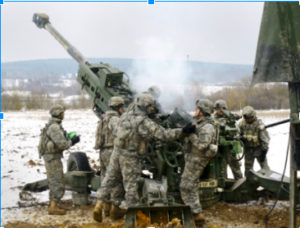Boots on the Ground Series

Back when I was working in the refinery, we would have what we called Gun Drills, a.k.a. Emergency Drills. They were called gun drills because, back in the days of shooting a canon, everyone had to be in the correct location. It was very precise; if you weren’t where you were supposed to be, then you had an opening on the team and that could lead to defensive vulnerabilities, injuries or even loss of life. My son is in the Army and the guys that shoot the cannons now still follow that same procedure. Everyone has a certain position and they all have to be there and do their job in a coordinated series of events.

In the refinery, we have the same type of thought about emergency drills. Refineries have the emergency procedures printed and posted, and people read through them and sign off that they know them. But some of these procedures really need to be practiced in the unit, not just on paper.
On weekends when things are a little slower for operations, we would run through the emergency scenarios. Maybe a heater shut down, compressor is running high vibes, coke drum bypass or a lack of feed. We had to know what do we needed to do in order to avert an issue.
One of the things I liked about emergency drills is that we went through them in a zone position. That means that no matter who is on shift, they can fill that role and perform the emergency functions necessary to prevent a crisis. It doesn’t need to be designated when the emergency happens. People should just know, “if I am working this area, this is where I go.” Maybe it’s the fuel gas valves area, or the heater charge pump, etc…
This is called a “zone defense.” All shifts would have the same game plan in the event of an emergency and each operator would have walked through the procedures numerous times so they know exactly what to do when an emergency strikes.

Using this strategy, you would also want to tie in communication with the control board. Have your team simulate calling in to the control board and practice emergency communication protocols. “Your fuel gas pressure shows 26 lbs and the valve shows 35% open, BOARD,” for example. Simulate that in conjunction with the board operator so that person is involved in the same scenario. We aren’t able to have a contingency plan for every emergency under the sun, but the main ones need to be run through using this technique of knowing what to do and when to do it.







Leave a Reply
You must be logged in to post a comment.